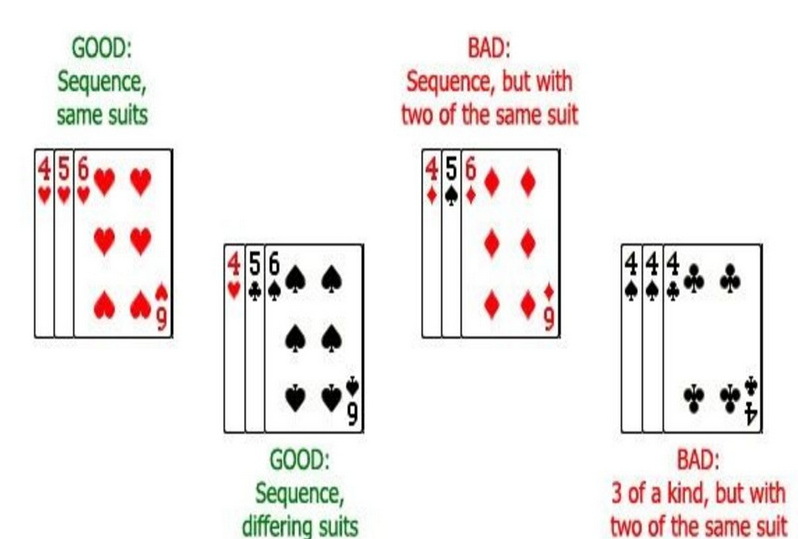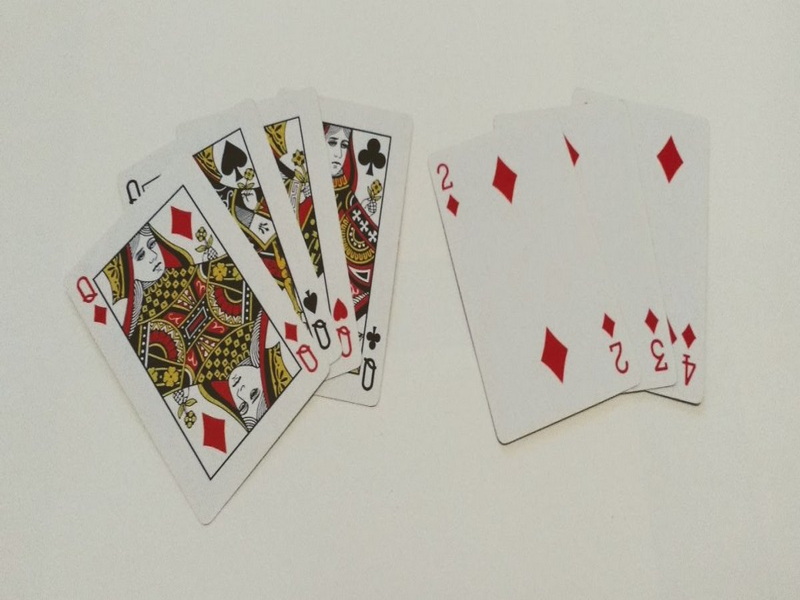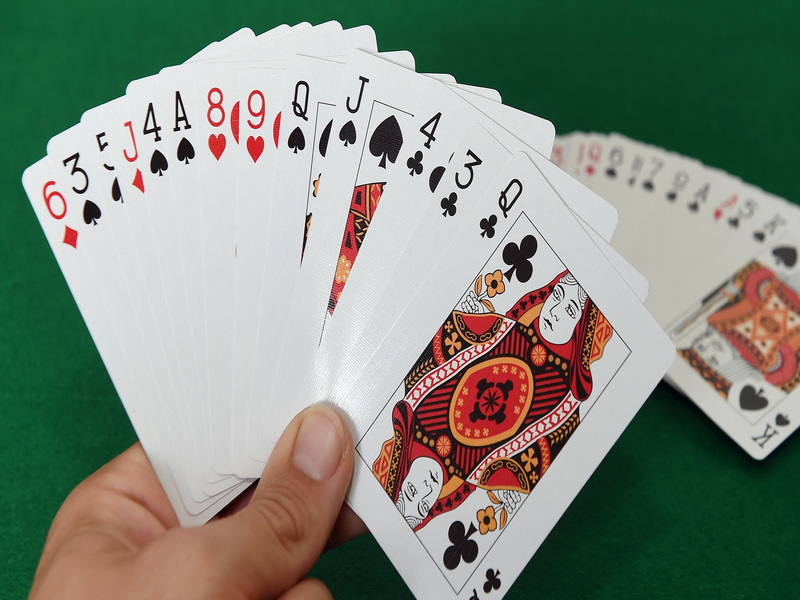Content Menu
● Introduction
● Understanding the Basics
>> What You Need to Play Rummy
>> The Objective of the Game
>> Types of Melds
● Setting Up the Game
>> Dealing the Cards
>> Starting the Game
● How to Play Rummy
>> Turn Structure
>> Going Out
>> Scoring Points
● Strategies for Winning at Rummy
>> Keep Track of Discarded Cards
>> Form Your Melds Early
>> Use Jokers Wisely
>> Discard Wisely
>> Adapt Your Strategy
>> Observe Opponents' Moves
>> Practice Patience and Timing
● Variations of Rummy
>> Gin Rummy
>> Indian Rummy
>> Kalooki Rummy
>> Oklahoma Rummy
>> Canasta
● Tips for Playing Rummy
>> Choose Your Opponents Wisely
>> Set House Rules Beforehand
>> Keep It Fun
● Conclusion
● Related Questions
>> 1. What is the best number of players for playing Rummy?
>> 2. Can I play Rummy online?
>> 3. Are there specific strategies for beginners in Rummy?
>> 4. What happens if I run out of stock cards during play?
>> 5. Is there an age limit for playing Rummy?
Introduction
Rummy is a popular card game that combines skill, strategy, and a bit of luck. It can be played with two or more players, making it a versatile choice for gatherings and family game nights. The objective of Rummy is to form valid combinations of cards, known as melds, which can be either sets or runs. This article will provide a comprehensive guide on how to play Rummy, including its rules, strategies, and variations.

Understanding the Basics
What You Need to Play Rummy
To play Rummy, you will need:
- A standard deck of 52 playing cards. In some variations, two decks may be used along with Jokers.
- 2 to 6 players.
- A flat surface to play on.
The Objective of the Game
The primary goal in Rummy is to arrange your cards into valid combinations. Players aim to meld all their cards into sets and runs while minimizing the points left in their hands when someone goes out.
Types of Melds
In Rummy, there are two main types of melds:
- Sets: A set consists of three or four cards of the same rank but different suits. For example, three Kings (King of Hearts, King of Diamonds, King of Clubs) form a set.
- Runs: A run consists of three or more consecutive cards of the same suit. For instance, a run could be 4-5-6 of Spades.
Setting Up the Game
Dealing the Cards
1. Shuffle the deck thoroughly.
2. Each player is dealt 10 or 13 cards (the number may vary based on house rules).
3. Place the remaining cards face down in the center to form the stock pile.
4. Flip the top card from the stock pile to start the discard pile.
Starting the Game
The player to the dealer's left typically goes first. Players take turns in a clockwise direction.
How to Play Rummy
Turn Structure
Each player's turn consists of three main actions:
1. Drawing: At the beginning of your turn, draw one card from either the stock pile or the discard pile.
2. Melding: After drawing, you may lay down any valid melds on the table. This step is optional and can only be done once per turn.
3. Discarding: To end your turn, discard one card onto the discard pile. If you have melded all your cards, you do not need to discard.
Going Out
A player "goes out" when they have formed valid melds with all their cards and discarded their last card. This action ends that round of play.
Scoring Points
After a player goes out, points are calculated based on the remaining cards in other players' hands:
- Number cards (2-10) are worth their face value.
- Face cards (Jack, Queen, King) are worth 10 points each.
- Aces can be worth either 1 point or 15 points depending on house rules.
The player with the lowest total score at the end of several rounds wins the game.
Strategies for Winning at Rummy
While Rummy involves an element of chance due to card drawing, employing strategic thinking can significantly improve your chances of winning. Here are some effective strategies:
Keep Track of Discarded Cards
Pay attention to which cards are being discarded by other players. This information can help you deduce what they might be trying to collect and allow you to avoid discarding cards that could help them.
Form Your Melds Early
Try to form your melds as early as possible in each round. This approach reduces your risk if another player goes out unexpectedly and helps you keep track of your remaining cards more effectively.
Use Jokers Wisely
If playing with Jokers, use them strategically as wildcards in your melds. However, be cautious about relying too heavily on them since they can also lead to higher penalties if left unmelded when someone goes out.
Discard Wisely
When discarding cards, consider what your opponents might need. Avoid discarding high-value cards that could help them complete their sets or runs.
Adapt Your Strategy
Be flexible in your approach based on how the game progresses. If you notice that players are close to going out, adjust your strategy accordingly—either by trying to go out yourself or by blocking others from doing so.
Observe Opponents' Moves
Pay close attention to how other players are playing their hands. If someone is consistently picking up certain types of cards from the discard pile or drawing frequently from the stockpile, it may indicate what they are trying to achieve. Use this information to inform your own decisions about which cards to keep and which ones to discard.
Practice Patience and Timing
Sometimes it's better not to rush into forming melds too quickly. Holding onto certain cards for a few rounds might allow you to create better combinations later on. Timing your moves effectively can give you an edge over your opponents who may be eager to go out prematurely.
Variations of Rummy
Rummy has several popular variations that introduce unique rules and gameplay mechanics:
Gin Rummy
In Gin Rummy, players aim to form sets and runs but must also knock when they believe they have a lower point total than their opponent's unmatched cards. The game is played with two players and typically uses a standard deck.
Indian Rummy
Indian Rummy is played with two decks and includes Jokers as wildcards. Players must create at least two sequences (one being a pure sequence) before declaring their hand.
Kalooki Rummy
Kalooki is played with two decks and includes Jokers as wildcards as well. Players can lay off their unmatched cards onto existing melds on the table during their turn.
Oklahoma Rummy
Oklahoma Rummy has similar rules to traditional Rummy but introduces a twist where players must draw from either the stock or discard pile based on certain conditions set at the beginning of the game.

Canasta
Canasta is a variation that requires players to form melds using seven or more cards in a single turn and includes specific rules about how many times players can lay down melds during gameplay.
Tips for Playing Rummy
To enhance your overall experience while playing Rummy, consider these additional tips:
Choose Your Opponents Wisely
Playing against experienced opponents can improve your skills significantly but also make it more challenging to win consistently. If you're new to Rummy, consider starting with friends who are also beginners until everyone gets comfortable with the rules and strategies involved.
Set House Rules Beforehand
Before starting a game session, agree upon any house rules that may differ from standard gameplay—such as how many points an Ace is worth or whether Jokers can substitute for any card in any situation—to ensure everyone is on the same page.
Keep It Fun
While competition is part of any game night, remember that having fun should always be prioritized over winning at all costs! Engage in light-hearted banter with fellow players and enjoy each other's company while playing this timeless card game.
Conclusion
Rummy is an engaging card game that offers endless fun for players of all ages. With its simple rules and strategic depth, it remains a favorite pastime worldwide. By understanding how to play Rummy and employing effective strategies, players can enhance their gaming experience and increase their chances of winning.
As you gather friends or family for a game night, consider incorporating different variations of Rummy for added excitement and challenge!

Related Questions
1. What is the best number of players for playing Rummy?
The best number of players for playing Rummy typically ranges from 2 to 6. However, it can be adjusted based on personal preference and available decks.
2. Can I play Rummy online?
Yes! Many platforms offer online versions of Rummy where you can play against friends or random opponents from around the world.
3. Are there specific strategies for beginners in Rummy?
Beginners should focus on forming melds early, keeping track of discarded cards, and being mindful about what they discard to avoid helping opponents complete their sets or runs.
4. What happens if I run out of stock cards during play?
If the stock pile runs out during play, reshuffle the discard pile without revealing any cards from it and continue playing until one player goes out.
5. Is there an age limit for playing Rummy?
Rummy can generally be played by individuals aged 8 and up; however, younger children may need assistance understanding some rules and strategies involved in gameplay.
































